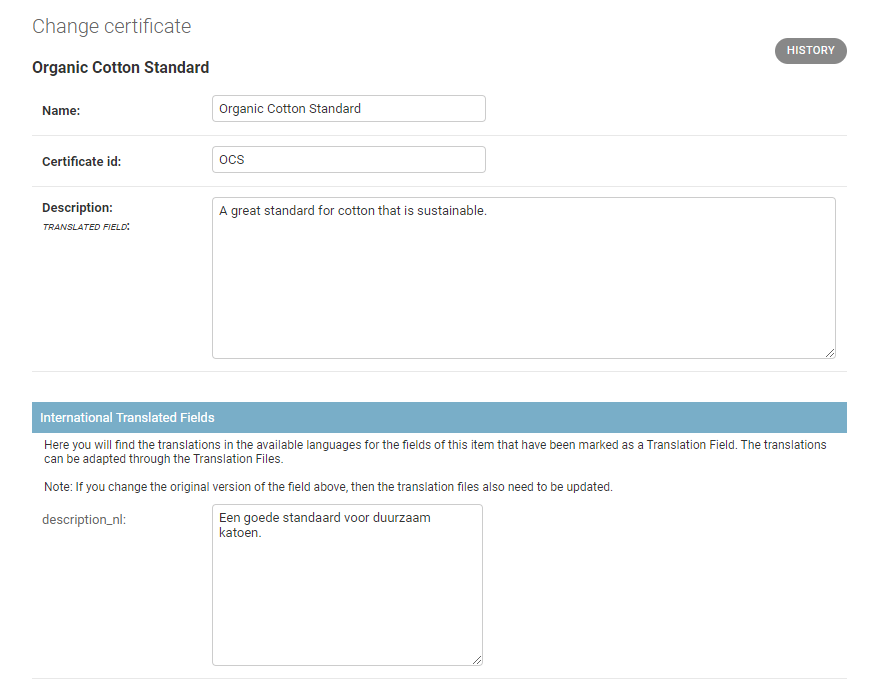Django to serve multiple sites/countries from a single application
Project description
Django International
A single application to server multiple domains and country sites.
Install
pip install django-international-sites-0.1.0.tar.gz- Add "international" to
INSTALLED_APPSinsettings.py - Run
python manage.py migrate international - Add
CountrySiteobjects in admin/admin/international/countrysite/
Settings
# Fallback country code
DEFAULT_COUNTRY_CODE = "NL"
# Optional: Set the below if you want the middleware to set the current site based
# on the location/country deduced from the visitor IP
# When using international.middleware.InternationalSiteMiddleware obtain
# geoip license key (for free) at xx and set path were geoip2 country library is
# to be installed here
GEOIP_PATH = os.path.join("geoip")
GEOIP_LICENSE = "asecretkeybymaxmind"
# Map domains uniquely to a single country code (optional)
UNIQUE_DOMAINS = {"example.nl": "nl", "example.co.uk": "uk"}
# Directory for site icons to be displayed in admin (optional)
SITE_ICON_DIR = "static/site_icons/"
Request middleware
How is the country code detected from the request?
- If a unique domain name set in
settings.UNIQUE_DOMAINS(e.g. example.nl), use country data of related country code - If country code is forced as url parameter (i.e. projectcece.com/c=fr), use that country code
- If a cookie with location preference is used, use that country code
- Check location based on visitor IP address, use that country code
- If nothing could be detected, use default country code
Add the middleware to settings:
MIDDLEWARE = [
...
'international.middleware.InternationalSiteMiddleware',
'django.middleware.locale.LocaleMiddleware',
'vinaigrette.middleware.VinaigretteAdminLanguageMiddleware'
]
This makes the current CountrySite object available through the request object. E.g., in views:
def index(request):
country_site = request.country_site
Models
All models in a project can be made international, i.e. associated to countries and/or languages, by inheriting the InternationalModel base class.
# models.py
from international.models import InternationalModel
class Product(InternationalModel):
name = models.CharField(max_length=50)
def __str__(self):
return self.name
This will add the country_sites and object_language field and extend the model managers.
To filter all models associated with CountrySite nl or with language "en":
products = Product.objects.by_country("nl")
products = Product.objects.by_language("en")
Language
When using in combination with Django's i18n translation, add the InternationalSiteMiddleware before the Django LocaleMiddleware in your project's settings.
If you want to force using the CountrySite.default_language language for a given CountrySite, set FORCE_COUNTRY_LANGUAGE to True. This will make sure that for e.g. the German country site, i18n will use the German language that has been associated to the CountrySite.
# settings.py
FORCE_COUNTRY_LANGUAGE = True
Country detection endpoint
The international.views.get_country_from_request is included that will return a JSON response with the detected visitor location based on their IP address when the MaxMind GeoIP2 library is installed. To use it, include international.urls in your project urls.py. This will include the localize/ endpoint that only allows GET requests, with example response:
{
"country": "NL", # country code or null
"detected": true # false when the country could not be detected from the visitor IP
}
Admin Mixins
InternationalModelAdminMixin
For models inheriting the InternationalModel class
TranslatedFieldsModelAdminMixin
For models using Vinaigrette translated fields - not InternationalModel
Extend model admin's with fields that use django-vinaigrette to add translations (using gettext instead of adding more fields in the db). In order to use this mixin the translated fields must be registerred to Vinaigrette in the app's config like below. Specifically, the translated_fields dictionary must be available in the AppConfig.
class TestappConfig(AppConfig):
default_auto_field = 'django.db.models.BigAutoField'
name = 'testapp'
translated_fields = {
'Certificate': ['description']
}
def ready(self):
for modelname in self.translated_fields.keys():
model = self.get_model(modelname)
# Register fields to translate
vinaigrette.register(model, self.translated_fields[modelname])
This will show the translated field indicator with all fields that can be translated in the translation files. It will also add the current translations to the bottom of the admin page (note: these are for reference and cannot be edited through the admin since they do not come from the database but the translation files)
Project details
Release history Release notifications | RSS feed
Download files
Download the file for your platform. If you're not sure which to choose, learn more about installing packages.
Source Distribution
Hashes for django-international-sites-0.1.1.tar.gz
| Algorithm | Hash digest | |
|---|---|---|
| SHA256 | 5d5329ce63611949eeacfbe3f4af6e4848dbcb893411c16c168cbcd48c9e143d |
|
| MD5 | eb4ba409e50b97ffa653f8031b24ddc4 |
|
| BLAKE2b-256 | 4ba628c006b87bb90f768680622624133fa1bb478c335c47ff60a26d60ca91f7 |












